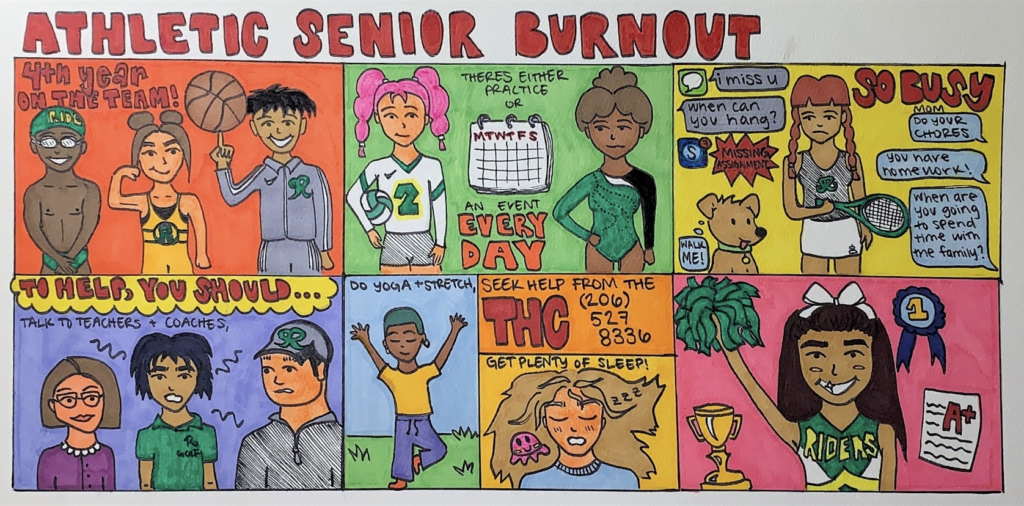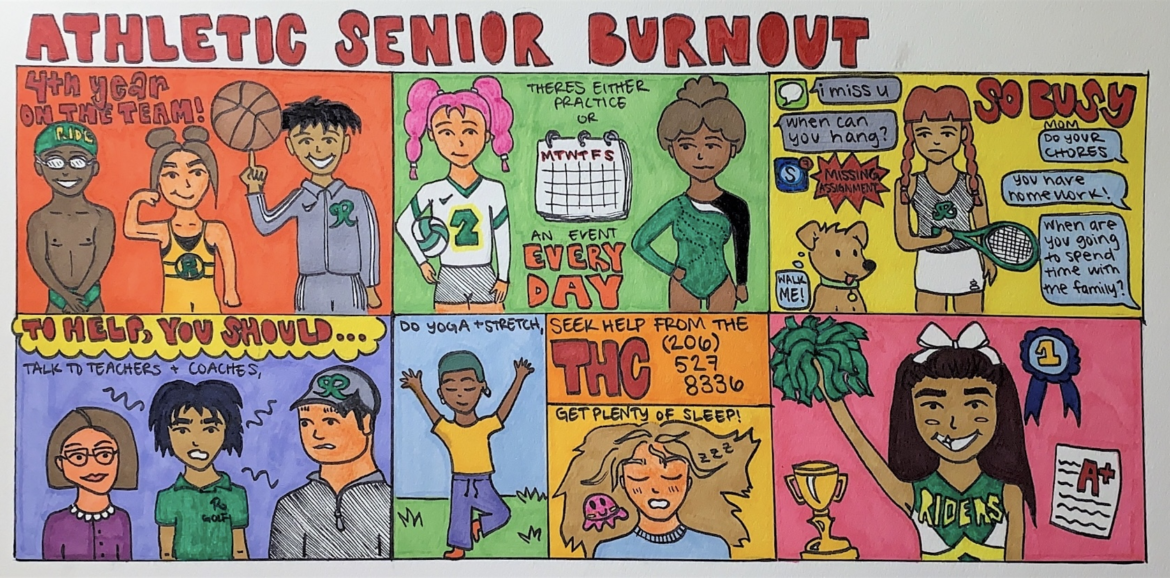
A problem that’s been plaguing athletes year after year has been athletic burnout. Though burnout in reference to school or work is generally a common experience, identifying the condition in relation to sport is less familiar.
Athletic burnout, as defined by the National Athletic Trainer’s Association, is “a response to chronic stress of continued demands in a sport or activity without the opportunity for physical and mental rest and recovery. Burnout is a syndrome of continual training and sport attention stress, resulting in staleness, overtraining and eventually burnout.”
When experiencing burnout, the individual suffers a multitude of symptoms, which according to WebMD include, but aren’t limited to, exhaustion and reduced performance.
Because sports can be taxing, especially for athletes competing in back-to-back seasons, it can be difficult for students to find the space to get a break. Between schoolwork, friends, clubs, and work, the responsibilities associated with high school can prove difficult to balance with sports.
Ryan Sherlock, the boys’ football coach and Athletic Director at Roosevelt, says an important part of his and the other coaches’ jobs includes teaching their athletes how to be healthy, whether that might concern their nutrition, hydration, sleep, or the mental health aspect of sports.
This involves having more conversations with athletes regarding their mental health, in an effort to promote greater self-awareness and provide support in that field. Throughout any athlete’s years at Roosevelt, Sherlock shares that it’s incredibly important to teach them how to set schedules and boundaries so that they don’t over-exert themselves.
An important part of figuring out how to make changes to prevent burnout is being able to recognize it. According to Lurie’s Children’s Hospital, some identifiable symptoms of athletic burnout include: mental exhaustion, reduced sports ability, reduced coordination, and anxiety, among other indicators.
Let’s say that you’ve identified burnout—what comes next? First, make sure to re-establish your base. Check that you’re getting enough sleep, eating well, and drinking enough water. Then, if that’s still not enough, try talking to your teachers and coaches if you find that homework load is the problem.
Many teachers at Roosevelt care deeply about their students and would likely be able to accommodate athletes through a period of burnout, as long as a need for support is communicated. Incorporating relaxing activities, like more stretching or yoga, into your training and practice routines, reworking your schedule, cutting yourself more slack, and even talking to your coaches and teammates for extra support are all other options to address burnout.
Sherlock also shares that another part of handling burnout long term may involve taking intermittent breaks from your sport or trying a new one.
Alternatively, one could also turn to the school counselors. If you find yourself having issues with mental health while playing your sport, and feel like you aren’t getting the right support you need from your team, parents, or coaches, then try to seek help from another qualified adult.
Sherlock explains that, during his time in the athletic department, he has not only seen students taking initiative to prioritize their health over their performance, but that greater numbers of athletes are now taking the time to express to their mentors when they need support.
“I see them, listen to their coaches and listen to our athletic trainers, [and] see them listen to their parents. And I see them, they do take care of themselves,” he says. “And they are a lot more vocal now about when they need that self care than they have been in the past […] They’re really good at self realization, and […] they’re understanding what their body is going through and they self advocate a little bit more.”


